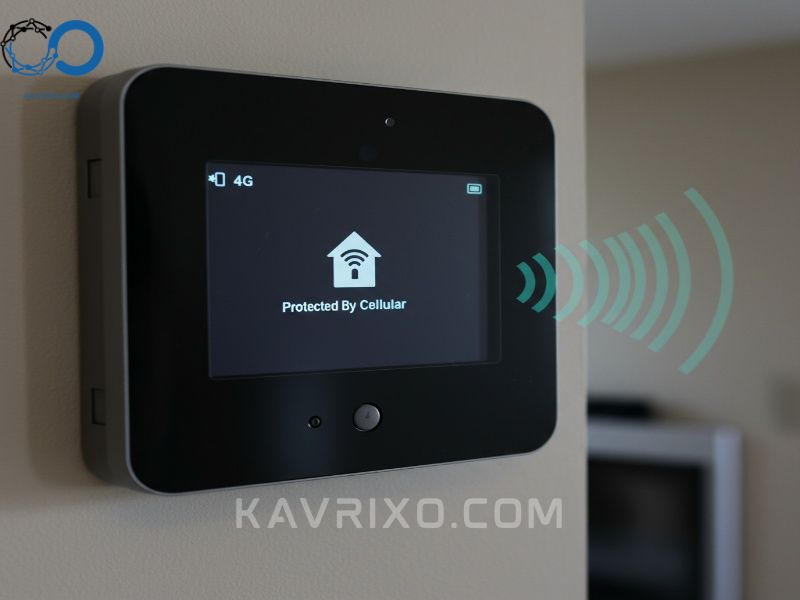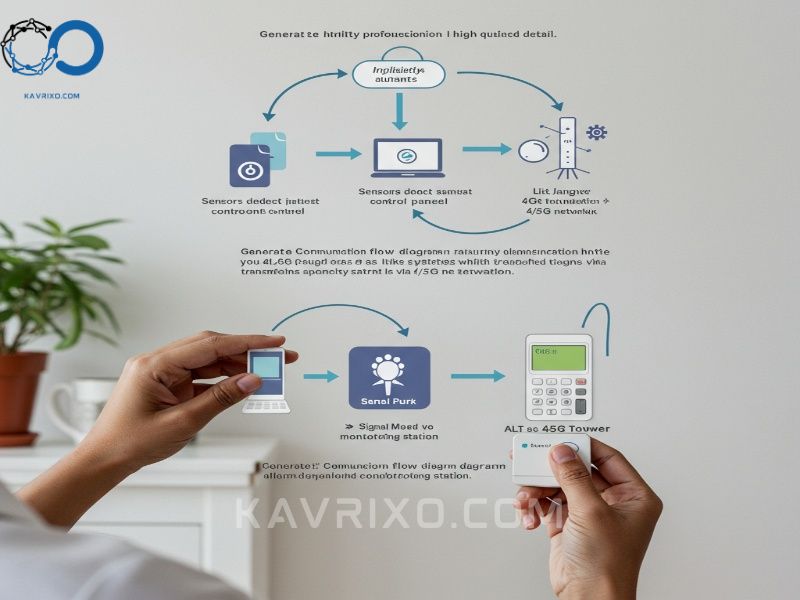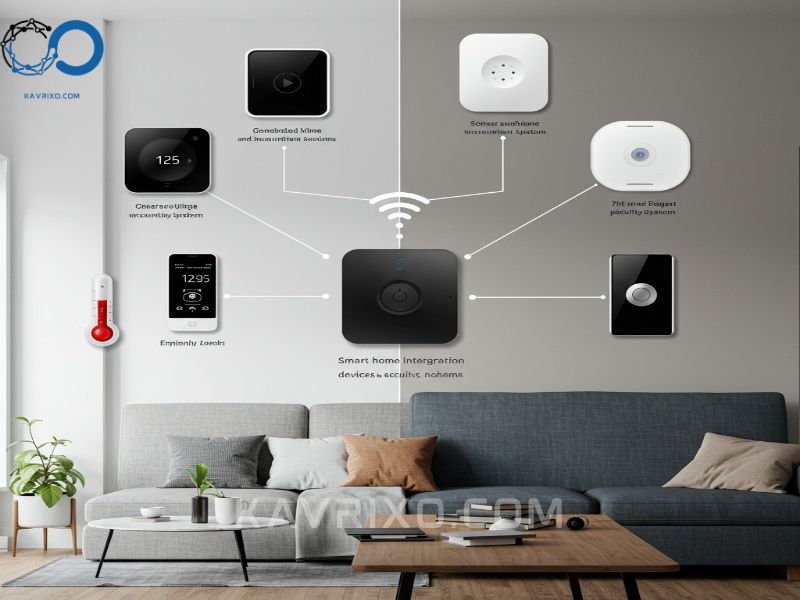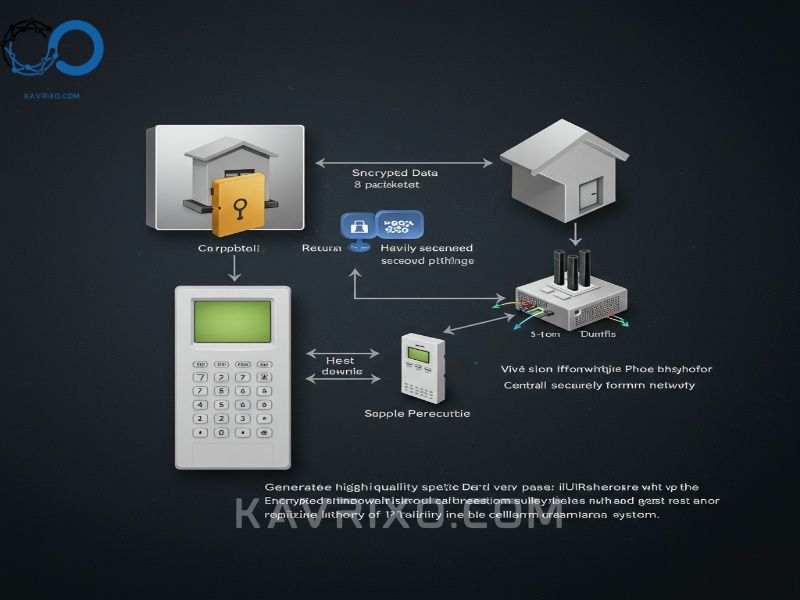In an increasingly connected world, the way we protect our homes has fundamentally changed. Gone are the days when a simple, easily cut landline connection offered sufficient security. Today, resilience, speed, and reliability are paramount, and this shift has placed the cellular alarm system firmly at the forefront of modern defense technology. If you are researching how to best safeguard your property, understanding the mechanics, advantages, and purchasing criteria of cellular home security is the crucial first step.
This comprehensive guide delves deep into why cellular technology has become the gold standard for home protection, examining everything from system components to advanced smart home integrations. We will help you navigate the features required to find the best cellular alarm system that meets both your safety demands and your lifestyle.
Contents
- 1 Defining Modern Security: What is a Cellular Alarm System?
- 2 The Critical Advantages of Cellular Home Security
- 3 Key Components of a Comprehensive Cellular Security System
- 4 Choosing the Best Cellular Alarm System: What to Look For
- 5 Advanced Features Transforming Cellular Security
- 6 Addressing Common Misconceptions About Cellular Security Systems
- 7 Securing the Future with Cellular Technology
Defining Modern Security: What is a Cellular Alarm System?
A cellular alarm system utilizes the same robust wireless technology that powers your mobile phone—the 4G or 5G network—to communicate signals between the control panel and the professional monitoring center. Unlike older systems that relied solely on a traditional telephone line (POTS) or even newer systems that depend entirely on residential Wi-Fi (VoIP), the cellular backbone ensures that the alarm signal transmission is fast, reliable, and virtually immune to common failure points.
The core distinction of a cellular security alarm system is its independence. It doesn’t need external wires or internet connectivity to send out an immediate distress signal during an emergency. This inherent redundancy is why industry professionals universally recommend cellular monitoring as the most secure method available today. Whether you are dealing with a power outage, internet failure, or deliberate tampering by intruders, the cellular home security system maintains an unbreakable line of communication with emergency responders.

The Critical Advantages of Cellular Home Security
The superiority of cellular security systems over traditional alternatives is not just about convenience; it is about guaranteeing protection when you need it most. The benefits translate directly into lower risk and greater peace of mind for homeowners.
Cutting the Cord: Freedom from Landlines
The reliance on landlines (POTS lines) in legacy security systems introduced massive vulnerabilities. A simple pair of wire cutters could instantly disable the entire alarm system before a signal could even be sent. Furthermore, as fewer households maintain copper landlines, these older systems are becoming increasingly obsolete and expensive to maintain.
A cellular home security setup eliminates this physical vulnerability entirely. Since the communication pathway is wireless and encrypted, there is no external wire for a burglar to snip. This makes the system far more resilient against common intrusion tactics, elevating the security baseline significantly.
Unmatched Resistance to Tampering
One of the most compelling reasons to choose a cellular burglar alarm system is its resistance to intentional interference. Intruders are often sophisticated and know how to disable landlines or even jam basic Wi-Fi signals. Cellular systems, however, are designed with advanced anti-jamming technology and sophisticated signal encryption.
Moreover, the best cellular security system installations often feature battery backup power supplies. If an intruder manages to cut the main power to the house, the cellular communicator—along with the sensors—continues to operate for many hours, ensuring that the critical “no power” or “system offline” notification is successfully transmitted to the monitoring center. This redundancy is the hallmark of truly reliable security.
Rapid Deployment and Installation
Because cellular communication is wireless, the installation of a new cellular security alarm system is typically much faster and less intrusive than older, hardwired models. Technicians do not need to drill extensive holes or snake wires through walls. This ease of installation contributes to lower installation costs and minimal disruption to the home environment.
Furthermore, this rapid deployment capability makes cellular systems ideal for all types of residences—from established houses to rental properties where permanent modifications are restricted. The modular nature of modern wireless sensors that communicate via cellular networks allows for quick expansion and reconfiguration as needed.
Key Components of a Comprehensive Cellular Security System
While the cellular module is the heart of the system, a robust cellular home security system is a complex ecosystem of interconnected devices working in harmony. Understanding these components is essential when selecting the best cellular alarm system.

The Cellular Control Panel (The Brain)
The control panel serves as the central hub. This device manages all communications, processes data from sensors, and initiates the cellular transmission to the monitoring center during an emergency. Modern cellular control panels are usually touchscreen interfaces, offering user-friendly access for arming, disarming, and system management.
Crucially, the cellular module (the actual radio transceiver) is integrated into or connected directly to this panel. When an alarm is triggered, the panel instantly switches to the cellular network to send a prioritized, encrypted signal. This ensures that even if your home Wi-Fi is down, the system remains fully operational.
Sensors and Detectors (The Eyes and Ears)
Modern cellular security systems rely on a variety of wireless sensors that communicate back to the control panel, often using proprietary low-power radio frequencies (like Z-Wave or specific encrypted protocols) that conserve battery life.
- Door and Window Contacts: These are fundamental perimeter defense points, signaling when an entry point is opened.
- Motion Detectors: Utilizing passive infrared (PIR) technology, these detect movement within a room. Advanced models offer pet immunity to prevent false alarms.
- Glass Break Sensors: These listen for the specific frequency signature of breaking glass, providing coverage for larger window areas.
- Environmental Sensors: Crucial for comprehensive home protection, these include smoke, carbon monoxide (CO), and flood detectors. When these are integrated into the cellular network, they ensure emergency notifications are sent even if a fire knocks out the power.
Remote Access and App Integration
A defining feature of the best cellular security system is seamless integration with mobile applications. These apps transform your smartphone into a portable control panel, allowing you to:
- Arm and Disarm Remotely: Manage the system from anywhere in the world.
- Receive Real-Time Alerts: Get instant notifications about system status, sensor triggers, and power failures.
- View Live Video Feeds: Integrate security cameras (often IP-based, using Wi-Fi locally but reporting through the cellular system backup) to verify events.
- Manage Users: Easily add or revoke access codes for family members or service providers.
This level of control and transparency is essential for the modern homeowner who needs to stay connected to their property, whether they are at work or on vacation.
Choosing the Best Cellular Alarm System: What to Look For
Selecting the right cellular alarm system requires careful evaluation of features, service models, and long-term costs. It is more than just choosing hardware; it’s about choosing a comprehensive protection strategy.
Monitoring Options: Professional vs. DIY
When considering a cellular alarm system, the first major decision is the monitoring service:
- Professional Monitoring: This is the most robust option. When an alarm triggers, the signal goes to a central monitoring station staffed 24/7. Trained operators verify the alarm and immediately contact emergency services (police, fire, or medical) if necessary. Most reliable cellular security systems mandate professional monitoring because it ensures immediate action, regardless of whether you are home or able to answer your phone.
- DIY Self-Monitoring: Some newer, simpler cellular systems allow you to monitor the system yourself, receiving alerts directly to your phone. While cheaper, this places the burden of calling emergency services squarely on the homeowner, which can be risky if you are unreachable, delayed, or unsure if the alarm is genuine. For true security, professional monitoring via a cellular security alarm system is highly recommended.

Battery Backup and Power Redundancy
A critical measure of the quality of a cellular alarm system is its ability to function without external power. Ensure the system you choose provides extensive battery backup for the main control panel. High-quality systems should guarantee operation for at least 12 to 24 hours during a power outage.
Furthermore, investigate how frequently the system tests its own communication path (the cellular connection). The best cellular security systems perform regular “supervisory checks” to ensure the link to the monitoring center is active, providing immediate notification if the cellular communication fails for any reason other than a normal power outage.
Integration with Smart Home Ecosystems
The modern cellular alarm system is often the cornerstone of a larger smart home ecosystem. Look for systems that are compatible with platforms like Google Home, Amazon Alexa, or Apple HomeKit. Seamless integration allows for enhanced automation, such as:
- Smart Lighting: Lights turning on automatically when the alarm is disarmed, or flashing during a triggered alarm.
- Smart Locks: Integration allows for remote locking/unlocking and ensures the system automatically arms when the door is locked from the outside.
- Thermostat Control: Adjusting climate control based on whether the system is armed (i.e., whether the house is empty).
This level of integration transforms the basic alarm into a powerful, automated security and convenience platform.
Evaluating Monthly Service Costs
The cost structure for a cellular alarm system typically involves two main components: the upfront hardware cost and the ongoing monthly monitoring fee.
Because cellular data transmission is often more expensive for the provider than VoIP or internet monitoring, the monthly fees for cellular security systems can sometimes be slightly higher. However, this extra cost pays for reliability. When comparing providers, ensure you understand exactly what the fee covers:
- Cellular data connectivity.
- 24/7 professional monitoring.
- Access to advanced features (video storage, smart home compatibility).
- Maintenance and warranty coverage.
Always read the contract carefully regarding cancellation policies and equipment ownership. A competitive and reliable service offers exceptional value, justifying the investment in the best cellular alarm system available.

Advanced Features Transforming Cellular Security
Innovation in home security is constant. The latest generation of cellular security alarm systems incorporates advanced technologies that move beyond simple intrusion detection, offering proactive safety measures.
Video Verification and AI Capabilities
Traditional alarms often suffered from high rates of false alarms, leading to delayed police response. Video verification solves this problem. When a sensor triggers, integrated security cameras immediately record a short clip which is sent to the monitoring center alongside the alarm signal.
This allows the operator to quickly confirm if there is an actual break-in, a feature highly valued by emergency services. Furthermore, many modern systems use Artificial Intelligence (AI) to differentiate between pets, vehicles, and humans, minimizing unnecessary alerts and improving the reliability of the cellular home security system.
Environmental Monitoring (Fire, CO, Water)
While often overshadowed by intrusion detection, life safety monitoring is arguably the most important feature of a cellular alarm system. Integrating smoke and carbon monoxide detectors into the cellular network ensures that if a fire starts and disables the home’s electrical grid or internet connection, the alert still reaches the monitoring center instantaneously.
Additionally, water leak sensors can prevent catastrophic property damage. Placing these sensors in basements, near water heaters, or under sinks ensures that the monitoring service can alert you (and potentially dispatch maintenance) immediately upon detecting moisture, mitigating costly insurance claims.

Geofencing and Automation
Geofencing uses the location services on your smartphone to create a virtual boundary around your home. As you leave this boundary, the cellular alarm system can automatically prompt you to arm the system, adjust the thermostat, or lock the doors. Conversely, as you return, the system can disarm and unlock the doors before you reach the driveway.
This automation significantly reduces user error (forgetting to arm the system) and enhances convenience, making the best cellular alarm system feel like a seamless extension of your daily life.
Addressing Common Misconceptions About Cellular Security Systems
Despite their prevalence, some homeowners still harbor outdated concerns about cellular alarm system technology. Addressing these myths is important for making an informed decision.
Misconception 1: Cellular Signals Are Unreliable
In the early days of 2G technology, cellular signals could sometimes be weak indoors. However, modern systems use sophisticated 4G LTE and 5G communicators designed for maximum power efficiency and signal penetration. They utilize multiple cellular carriers or specialized high-gain antennae to ensure connectivity even in areas with weak mobile phone coverage. Furthermore, the communication is highly encrypted and constantly supervised, meaning reliability is significantly higher than relying on a residential internet connection, which is prone to local outages and interruptions.
Misconception 2: Cellular Systems Are Vulnerable to Jamming
While signal jamming is technically possible, professional cellular security systems employ frequency hopping and advanced anti-jamming protocols. If a powerful jammer is detected in the vicinity, the system is designed to recognize the interference and immediately send a “communication failure” signal via any remaining communication path, or simply trigger the alarm as a sign of probable intrusion attempt. The system failure itself acts as an alarm, ensuring the intruder cannot silently disable the system.

Misconception 3: High Monthly Data Usage
Security monitoring signals are tiny data packets, usually less than a few kilobytes per day, used primarily for supervisory checks and alarm triggers. Even with frequent arming/disarming, the data usage remains minimal. The only component that might consume significant bandwidth is integrated video surveillance, but this video usually uses your home Wi-Fi for local streaming and only utilizes the cellular backup in emergencies or if the Wi-Fi fails. Therefore, the monthly fee covers the security service and the communication link, not massive data consumption.
Securing the Future with Cellular Technology
Choosing a cellular alarm system is perhaps the most critical decision you can make when establishing robust home security. It represents a fundamental shift away from vulnerable, wired solutions toward resilient, wireless, and redundant protection.
By prioritizing systems that offer strong battery backup, integrating smart features, and ensuring 24/7 professional monitoring through a dedicated cellular link, you invest in a security solution that works even when everything else fails. Whether you are seeking the foundational protection of a basic cellular burglar alarm system or the comprehensive smart features of the best cellular security system on the market, the underlying cellular technology provides the peace of mind that your home and family are always connected and protected.
